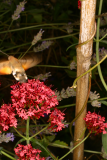Additional notes (click to expand)
Medicinal
Mentioned in traditional herbals as being a nervine. However there is some question that Valerian rubra may have been confused with Valeriana officinalis, the roots of which have been used for their sedative properties.
Grieve writes in her herbal that 'The Red-Spur Valerian, a plant with lance-shaped, untoothed leaves and red flowers with a spur at the base, grouped in dense clusters, must not be confounded with the true medicinal Valerian, though the mistake is often made. It is destitute of the properties of the official Valerian, and is not usefully applied in England, though in some parts of Continental Europe the leaves are eaten. They are exceedingly good in salad, or cooked as a vegetable, and in France there is a sale for the roots for soups.'
Grieve, Mrs M. (1931). A Modern Herbal, Penguin. Leyel, Mrs CF P.830
Nomenclature
Previously grown as Centranthus ruber
Plants of the World online, Kew Science http://plantsoftheworldonline.org/taxon/urn:lsid:ipni.org:names:860141-1
link
Geographical distribution
- Africa, Northern Africa, Algeria
- Africa, Northern Africa, Morocco
- Africa, Northern Africa, Tunisia
- Asia-Temperate, Western Asia, Turkey
- Europe, Eastern Europe, Ukraine
- Europe, Southeastern Europe, Albania
- Europe, Southeastern Europe, Greece
- Europe, Southeastern Europe, Italy
- Europe, Southeastern Europe, Yugoslavia
- Europe, Southwestern Europe, France
- Europe, Southwestern Europe, Portugal
- Europe, Southwestern Europe, Spain
Valeriana rubra L.
Family: CAPRIFOLIACEAEGenus: Valeriana
Species: rubra L.
Common names: Red Valerian; Kiss-me-quick
Pharmacopoeia Londinensis name: Been rubrum
Distribution summary: North Africa, Europe, Turkey
Habit: Perennial
Hardiness: H5 - Hardy; cold winter
Habitat: Roadsides, wasteland & cultivated land
Garden status: Currently grown
Garden location: Pharmacopoeia Londinensis 1618 'Roots' (HSE 2)
Flowering months: June, July, August
Reason for growing: Medicinal
.JPG)
.JPG)
.JPG)
.JPG)
.JPG)

.JPG)